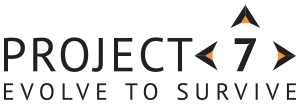The London Underground [LU] is a public rapid transit system, serving London, in the United Kingdom. The network comprises of 11 lines, and carries approximately 1.34 billion passengers a year [4.8million per day], making it the world’s 11th busiest metro system, employing circa 24,000 people.
The performance and reliability of LU is key to enabling it to deliver the customer promise of ‘Every Journey Matters,’ and is ultimately vital to the safe and effective operation and growth of London more widely.
LU reliability performance had been worsening since 2016, following a sustained period of improvement since 2011. Recognising this, the Managing Director of LU, and the wider LU Executive, commissioned a reliability improvement project to ensure it as meeting the level of performance committed to in the Transport for London [TfL] Business Plan.
Five work-streams were identified that were having a significant contribution to worsening network performance; Staff Availability [absenteeism] in Line Operations was one of the five workstreams.
Poor absenteeism manifests itself in cancellations, lost customer hours, as well as increased cost equating to £48M per annum.
Following an initial assessment by Project7, it was identified that there were 3 main causes for the issue of Staff Availability;
- The Attendance at Work Policy, which was not sufficiently robust to sanction those employees who are unable to sustain attendance.
- Use of the Policy by key stakeholders, such as Operations and HR, was such that standards of dealing with employees at various stages in the process was not timely enough or consistent.
- The capability level of managers to deal with these issues was not at the required standard.
To establish the current state, Project7 began by conducting a deep dive into absence cases, reviewing touch points throughout the absence process, including adherence to process in parallel with the mindsets, capability and behaviours of the people using and managing the process.
A pilot Visual Performance Management process was designed, developed and implemented in the worst performing area. Lead and lag metrics were identified, defined and used as part of the Visual Performance Management process. Area Leaders were coached in how to conduct regular performance dialogues with their teams, and structured problem-solving techniques were used to address gaps in performance. As a result, absenteeism fell by approximately 7% from 16% to 9% over an initial 12-week period.
A Project Management Office [PMO] was then established for Line Operations to coordinate and provide overall governance for the improvement programme, with a weekly cross-functional team meeting. A standardised Tiered Visual Performance Management system was designed, developed and deployed across all of Line Operations to create transparency and a forum for teams to review, drive and improve performance of staff availability.
Whilst the project was initially aimed at train operators in Line Operations, it became extended into Customer Service and Asset Operations to provide a standardised approach across the business.
Project7’s ability to work vertically [from executive to front line] and horizontally [operations and professional services] within the business, to initially establish the current state and then to maximise sustainable change through people and process, resulted in significant performance improvement.
Overall staff availability results for train operators in Line Operations, where the number of employees on restricted duties, was 85 [2.4%] against a target of 52 [1.5%]. The programme resulted in the number of restricted employees reducing to 35 [1%], a 58% improvement with a cost avoidance salary wise of £2.4M per annum, after the first 9 months. The success of the project has resulted in a £15.4m cost avoidance total; equating to a 64:1 Return on Investment.
- The overall number of employees off sick across the network reduced by 14.2%. Equating to a £2.4m cost avoidance in salaries.
- The reduction in lost customer hours has provided a cost avoidance to date of £5m, with a projected annual customer benefit of £13m.
- The £15.4m cost avoidance equates to a 64:1 Return On Investment.

